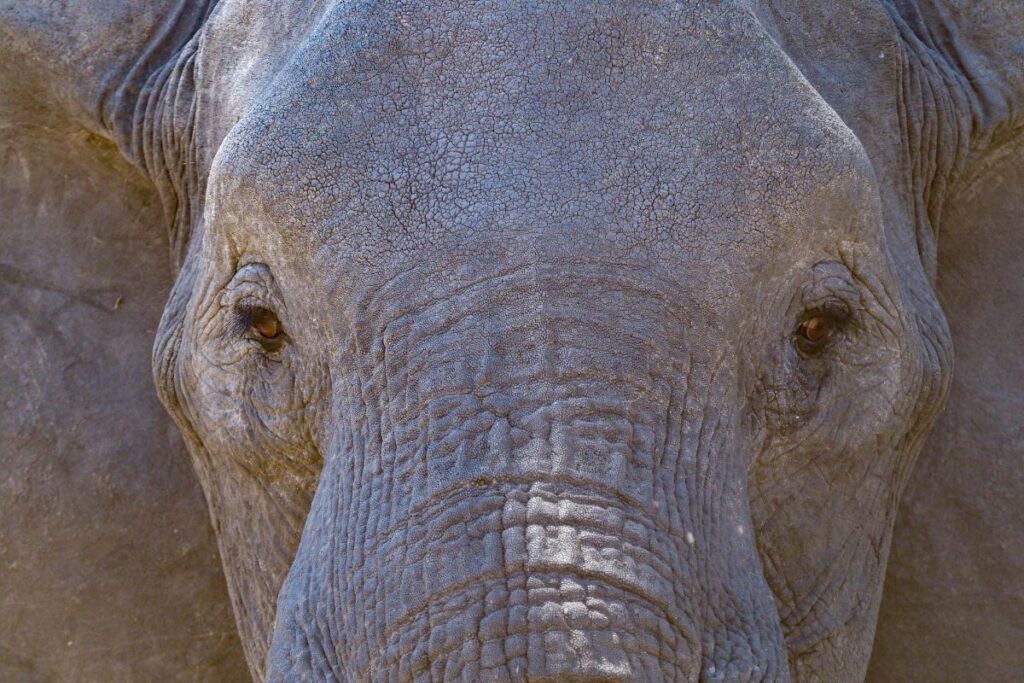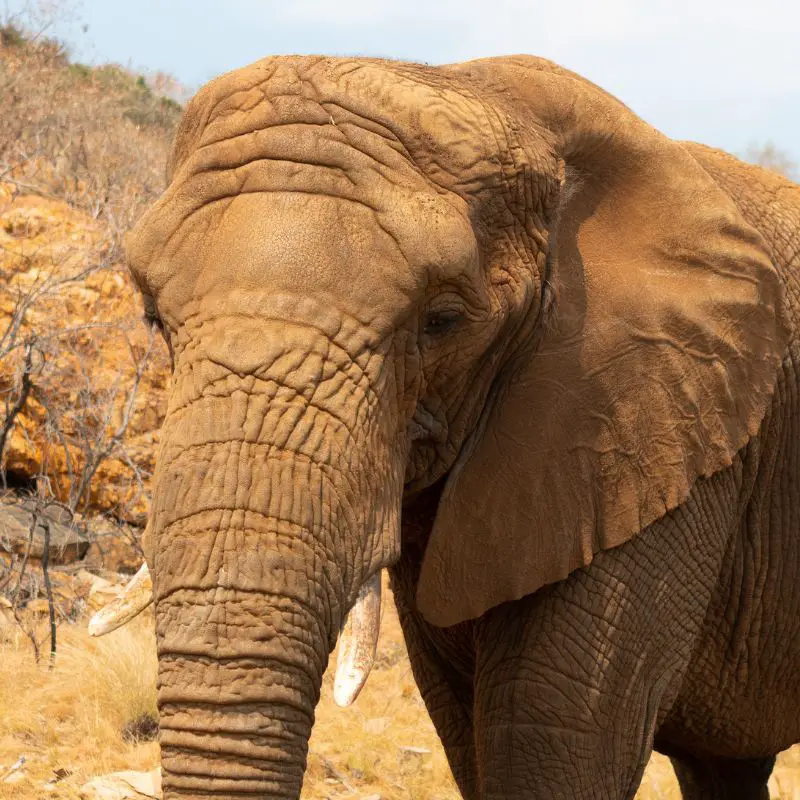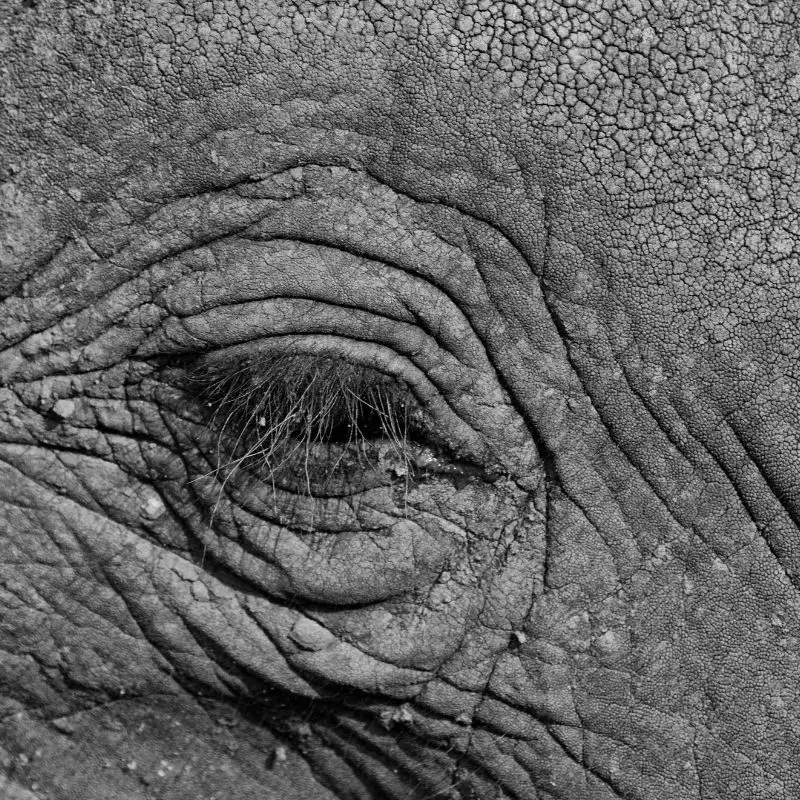Elephants are the largest land mammals on Earth and are known for their intelligence, trunks, or ears, but their eyesight is also quite interesting. For such a large animal, the elephant has poor vision.
Elephants don’t have good eyesight. They can only see for a distance of up to 20 meters. An elephant is born almost blind, and their vision improves throughout its lifespan. They’re also colorblind, in a way similar to colorblind humans. They have trouble differentiating between green and red colors.
In this article, we’ll look further into the eyesight of elephants and see how they cope.

Overview of Elephants Vision
Elephants can see up to 10 meters and have an overall sight range of 20 meters. They have poor depth perception, making it difficult to judge distances and navigate.
Elephant Vision at Night
Elephants can see quite well in the dark.
They have arrhythmic vision, which means they can see reasonably well in even small amounts of light once night comes, as their eyes become more sensitive to colors such as blue and violet.

Colorblindness in Elephants
Elephants are also color-blind. They can see colors such as blue and yellow but cannot distinguish between red and green.
In the daylight, elephants only have two color sensors.
The Eyesight of Newborn Elephants
Elephants are born blind, and their vision expands as they grow, but when they are newborns or babies, they rely on their mothers for direction and eventually learn to see on their own.
Elephant Eyesight Compared to Humans
In comparison to human vision, elephants’ eyesight is relatively poor. Humans have a much wider vision and can see much further than elephants.
Humans have a field of vision of around 180 degrees, while elephants have a field of vision of about 67 degrees.
Humans also have better color vision and more sensitive eyes, allowing us to see in low-light conditions.
This begs the question, if elephants cannot see clearly, how do they survive in nature?
How Do Elephants Compensate for Their Eyesight?
We have established that the elephant cannot see clearly. Therefore, the elephant must rely on its other senses.
Elephants use their trunk for a sense of touch and smell. Elephants have a very keen sense of smell and can smell water 12 miles away.
The elephant uses its trunk to breathe, smell and draw in water. They swing their trunks around to gather more information about their surroundings using smell.
The elephant also has incredible hearing. They can detect sounds as low as 14 hertz and as high as 12,000 hertz. Elephants can recognize calls and voices from 1-1.5 km away. The elephant’s large head and ears allow them to hear low sounds from great distances easily.
If that’s not enough, elephants also have a sensitive sense of touch! They are capable of perceiving pressure changes as low as 0.25 mm. The elephant’s trunk has extensive sensory motor cells, which allow them a strong sense of touch.
Additionally, elephants have a strong memory and can easily remember specific people and locations, which helps them navigate.
It’s said that due to this sensitive power of touch and detection of seismic vibrations built in their bodies, the elephants avoided the Asian Tsunami of 2004.
The approaching vibrations of the tsunami alerted elephants due to their sense of touch and vibrations, and they evacuated safely.
Anatomy of the Elephants Eye
The elephant’s eyes are quite small compared to the rest of its body mass. An African elephant is five thousand to fourteen thousand pounds and has a height of up to thirteen feet; in comparison, their eyes are only three point eight centimeters!
The eyes of the elephant are on each side of their head, providing them with better peripheral vision but reducing straight vision.
Their eyes are protected by long eyelashes, which help deter dirt, sand, and dense vegetation. The elephant also has a third eyelid in addition to the regular two. This third eyelid moves across the eye and helps moisten it!
They also have a unique adaptation in their eyes called the tapetum lucidum. This is a layer of tissue behind the retina that reflects light through the retina, increasing the amount of light that reaches their eyes and allowing them to increase visibility in the dark.
Just like humans, elephants also have different colored eyes! The eye color of an elephant can range from brown to gray! They do not have tear ducts; tears evaporate or run down their cheeks.

Final Thoughts On Elephant Eyesight
An elephant has poor eyesight, but they can easily compensate for it with their great other senses, such as hearing and touch.
Their large size, sense of smell, and hearing allow them to navigate and thrive in these environments.
Elephants are fascinating creatures, and their eyesight, while not as sharp as humans, is still an impressive adaptation that allows them to survive and thrive in their environment.
FAQs
What Animal Has the Best Vision?
Eagles have the best vision of all animals in the animal kingdom. An eagle’s optical power is four times stronger than ours.
Why Do Elephants Have Poor Vision?
Elephants’ eyes are small, not only in size, but their position is also very inconvenient, which causes them to have poor vision.
Are Elephants More Intelligent Than Humans?
Elephants arguably have one of the most intelligent brains in the animal kingdom. An elephant’s brain is three times larger than a human’s and has more neurons. An elephant has 257 million fibers, whereas a human has 86 million.
